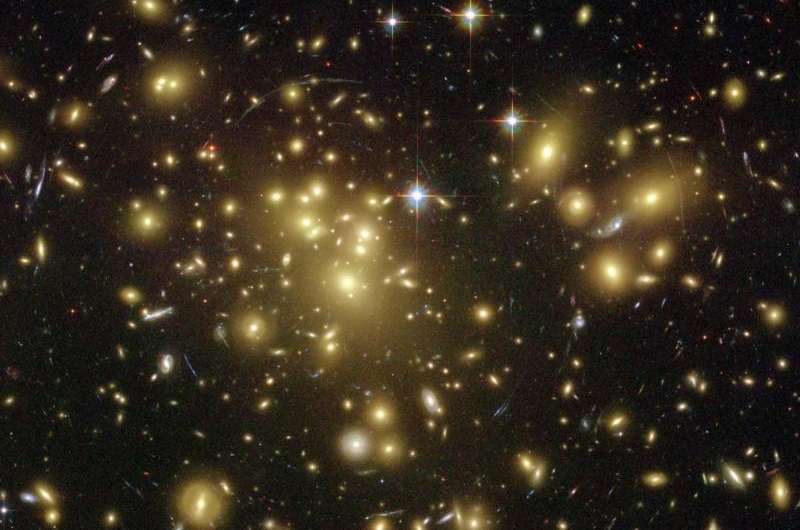Star formation in distant galaxy clusters

The first stars appeared about one hundred million years after the big bang, and ever since then stars and star formation processes have lit up the cosmos, producing heavy elements, planets, black holes, and arguably all of the other interesting characters in today's universe. When the universe was about three billion years old (currently it is 13.8 billion years old), star formation activity peaked at rates about ten times above current levels. Why this happened, and whether the physical processes back then were different from those today or just more active (and why), are among the most pressing questions in astronomy, and are among the drivers of future facilities from large ground-based telescopes to NASA's James Webb Space Telescope.
The local environment of a galaxy plays a critical role in regulating its star formation. Studies in the local universe find, for example, that in dense galaxy cluster environments (a cluster can contain as many as a thousand galaxies) the star formation is suppressed, consistent with the idea that interactions and other mechanisms are stripping away the raw material for new stars (the neutral gas) and sweeping it into the intergalactic environment. In the distant universe, however, the picture is murkier, and some studies have even found the opposite, perhaps explaining in part the higher star formation rates then. Although studies of individual galaxies in the early universe have made progress, it is usually because these are extremely active and luminous galaxies. A cluster of galaxies, by contrast, might host one or two bright members but most of the membership is ordinary, faint, and hard to study. In fact, clusters are usually even difficult to identify.
CfA astronomers Matt Ashby, Brian Stalder, Tony Stark and their team of colleagues have studied star formation in very dense galaxy clusters in the early universe, dating from about six billion years after the big bang, in an effort to resolve the issue of star formation in cluster environments. They started with a sample of ultraluminous galaxies from the earlier, three billion year-old epoch (or even younger), discovered with the South Pole Telescope. These more distant galaxies were detected in part because their light has been gravitationally lensed by closer clusters; that is how the team was able to locate these clusters in the first place. Knowing where to look, the scientists used infrared data from the Herschel and Planck Space Telescopes (and others) to examine the faint infrared signals from the clusters. That light is presumed to come from star formation, allowing the scientists to determine its level of activity and properties. Their principal finding is that the star formation activity is actually enhanced, not suppressed, in these clusters, up to several thousand new stars are forming per year in these clusters over-and-above the normal levels for these sets of galaxies. They also find that star formation is active out to the edges of clusters, perhaps fifteen million light-years across, and that the effect of this faint infrared emission needs to be taken into consideration in studies of origins of the cosmic background.
More information: N. Welikala et al. Probing star formation in the dense environments of z 1 lensing haloes aligned with dusty star-forming galaxies detected with the South Pole Telescope, Monthly Notices of the Royal Astronomical Society (2015). DOI: 10.1093/mnras/stv2302
Journal information: Monthly Notices of the Royal Astronomical Society
Provided by Harvard-Smithsonian Center for Astrophysics





















